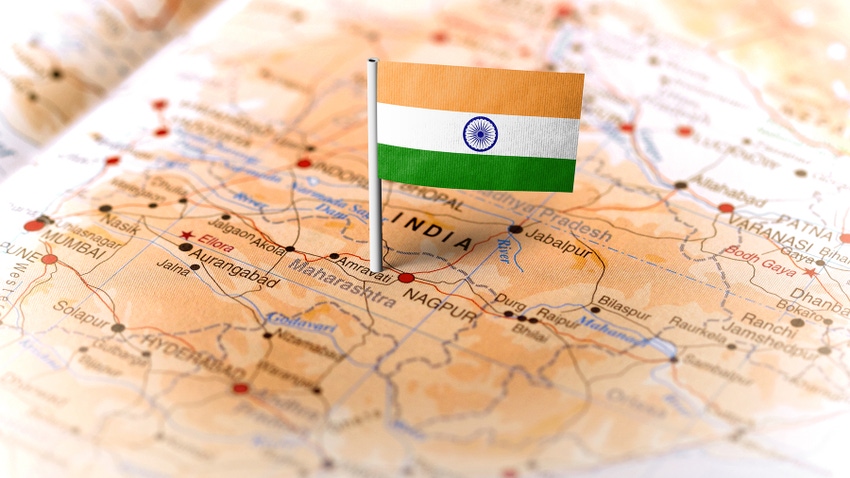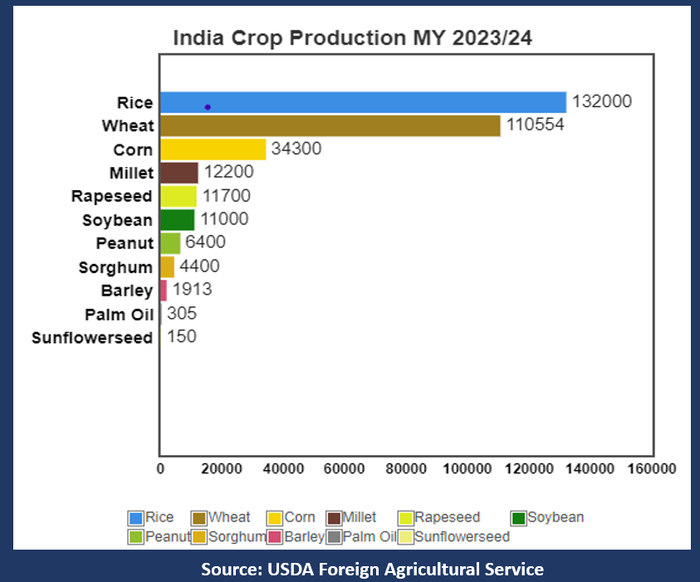
When thinking of global countries to watch regarding commodity demand, focus often shifts to China, and rightfully so. Over the past decade, China’s growing economy has allowed their middle-class population to grow financially. With more money in their pocket to spend on food, Chinese demand for commodities, especially agricultural commodities and proteins, grew significantly.
And while China continues to be a very important piece of the global commodity demand puzzle, India must not be ignored.
What’s happened
Surpassing China as the number one country in terms of population, India is now the world's largest with over 1.4 billion people. India is also gaining momentum as a global economic powerhouse.
India is the fifth largest economy in the world, behind the United States, China, Japan, and Germany. They have emerged from a post-Covid recovery with astonishing strength. According to a recent Reuters article, “The Indian economy expanded 7.6% in the July - September quarter, better than expectations from Reserve Bank of India's estimate of 6.5%.”
Because of this, India is the country to monitor in the coming years in terms of agricultural commodity demand.
From a marketing perspective
Demand for agricultural commodities in India are likely to grow in the coming years as the population grows along with the economy. A simple internet search suggests that within the country of India, food staples such as rice, wheat flour, lentils, chicken, mutton, and fish are primary foods consumed by the general population. Oils such as sunflower, cottonseed, and soybean oils are popular for cooking.
I’m quite curious as to the potential change in food and protein demand that India will encounter in the coming decade as their middle-class consumers gain economic stature. Will their diets change, similar in fashion to how Chinese diets have changed over the past decade?
Here are four agricultural commodities to watch in India.
Cotton
Cotton for cottonseed oil and cotton use for the textile industry is an important commodity to monitor in terms of both production and demand.
India is the world’s second largest producer of cotton in the world, following China. According to the USDA, for the 2023/24 crop year, India is expected to grow 25 million bales (480-pounds each) of cotton, with domestic use of 24 million bales.
Most noticeable is that India uses nearly all the cotton it grows. Little is left to potentially export to the world.
Wheat
India is the third largest grower of wheat in the world, following China and the European Union.
According to the most recent USDA report, India is expected to grow 110.55 million metric tons of wheat for the 2023/24 crop year, with domestic use of 108.65 mmt, meaning that they use everything they grow.
This is the crop I’m watching the most, as the global demand for wheat continues to remain robust, with global ending stocks of wheat trending lower. India has no room for a wheat crop failure.
Rice
India is the second largest rice grower in the world, following China. The most recent USDA report has Indian rice production for 2023/24 at 132 mmt, with domestic use at 118 mmt. Interestingly enough, India does export nearly 16.5 mmt of rice to the world.
This means that what they grow, they use up fully both domestically and for export, relying on a sufficient “beginning stock” pile of 35 mmt. However, ending stocks for 2023/24 are trending lower, now pegged at 32.5 mmt.
Soybean products
Soybean and soybean product demand is also growing in India as a major staple for India’s sustainable protein needs. Soymeal demand for feed for chicken edges higher with demand near 7 mmt annually, according to the USDA.
Soyoil demand in India is near 5.1 mmt, with imports of 3.3 mmt, and likely to grow.
Here is a look at additional agricultural crop production in India. Rice and wheat are by far their largest crops.

Prepare yourself
As a growing economic powerhouse, India’s demand for commodities is likely to continue to grow both due to population growth and an emerging middle class.
Also, because India consumes a majority of its production across several commodities, any severe weather gyration in the country may drastically lower production and shift India to a reliance on imports.
This is a global market that U.S. farmers want to be monitoring as a future important growing trade partner.
Reach Naomi Blohm at 800-334-9779, on X (previously Twitter): @naomiblohm, and at [email protected].
Disclaimer: The data contained herein is believed to be drawn from reliable sources but cannot be guaranteed. Individuals acting on this information are responsible for their own actions. Commodity trading may not be suitable for all recipients of this report. Futures and options trading involve significant risk of loss and may not be suitable for everyone. Therefore, carefully consider whether such trading is suitable for you in light of your financial condition. Examples of seasonal price moves or extreme market conditions are not meant to imply that such moves or conditions are common occurrences or likely to occur. Futures prices have already factored in the seasonal aspects of supply and demand. No representation is being made that scenario planning, strategy or discipline will guarantee success or profits. Any decisions you may make to buy, sell or hold a futures or options position on such research are entirely your own and not in any way deemed to be endorsed by or attributed to Total Farm Marketing. Total Farm Marketing and TFM refer to Stewart-Peterson Group Inc., Stewart-Peterson Inc., and SP Risk Services LLC. Stewart-Peterson Group Inc. is registered with the Commodity Futures Trading Commission (CFTC) as an introducing broker and is a member of National Futures Association. SP Risk Services, LLC is an insurance agency and an equal opportunity provider. Stewart-Peterson Inc. is a publishing company. A customer may have relationships with all three companies. SP Risk Services LLC and Stewart-Peterson Inc. are wholly owned by Stewart-Peterson Group Inc. unless otherwise noted, services referenced are services of Stewart-Peterson Group Inc. Presented for solicitation.
Read more about:
TradeAbout the Author(s)
You May Also Like






